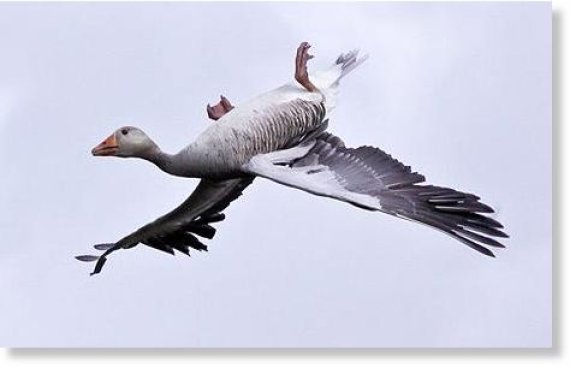A longhorn beetle trying to take off and bumping into the same twig three times in a row. Two bees crashing into each other in mid air. These are things that are hard to see with the naked eye. But a high-speed camera can shoot a huge number of images per second, and the scenes can then be played back extremely slowly. Something that takes place in a flash in real time can be replayed in a spectacular show lasting minutes.
2,400 short films
Over the past year 460 participants have worked on the Flight Artists project with which Wageningen won the Annual Academic Prize last year. Together, these amateur cinematographers shot about 2,400 short films of flying creatures. All in the interests of science. And the best clips were viewed during the High Speed Film Festival at the Wageningen cinema. The crashing bees were among them.
Acrobatic goose
But they were not the only flying stuntsmen to attract attention. There were also some examples of astonishing aerial virtuosity. A goose suddenly decides to fly upside down. This behaviour has never been filmed at high speed before. You can see how the bird turns its body 180 degrees, while keeping its head upright. Why it does this trick is still a mystery. And then there is a fly doing a perfectly coordinated somersault. And a sparrow is filmed at a speed of 3,500 frames per second. The upward movement of the wings makes them look like Luxaflex blinds. This reduces the resistance the wings meet and enables the little bird to manoeuvre better in the air.
Educational
The videos are not just nice to watch; according to project leader David Lentink, we can also learn a lot from them. ‘With high-speed films we discover things we have never seen before, Stunts which we couldn’t see with the naked eye and which we cannot explain with our current knowledge of flight. For example, we learn new things about flight behaviour, accidents, propulsion and mating behaviour in the air.’
Participants can keep the cameras for another two years free of charge and contribute their films to the advance of science. The films mentioned above can be seen below. For the rest of the films, go to www.vliegkunstenaars.nl

